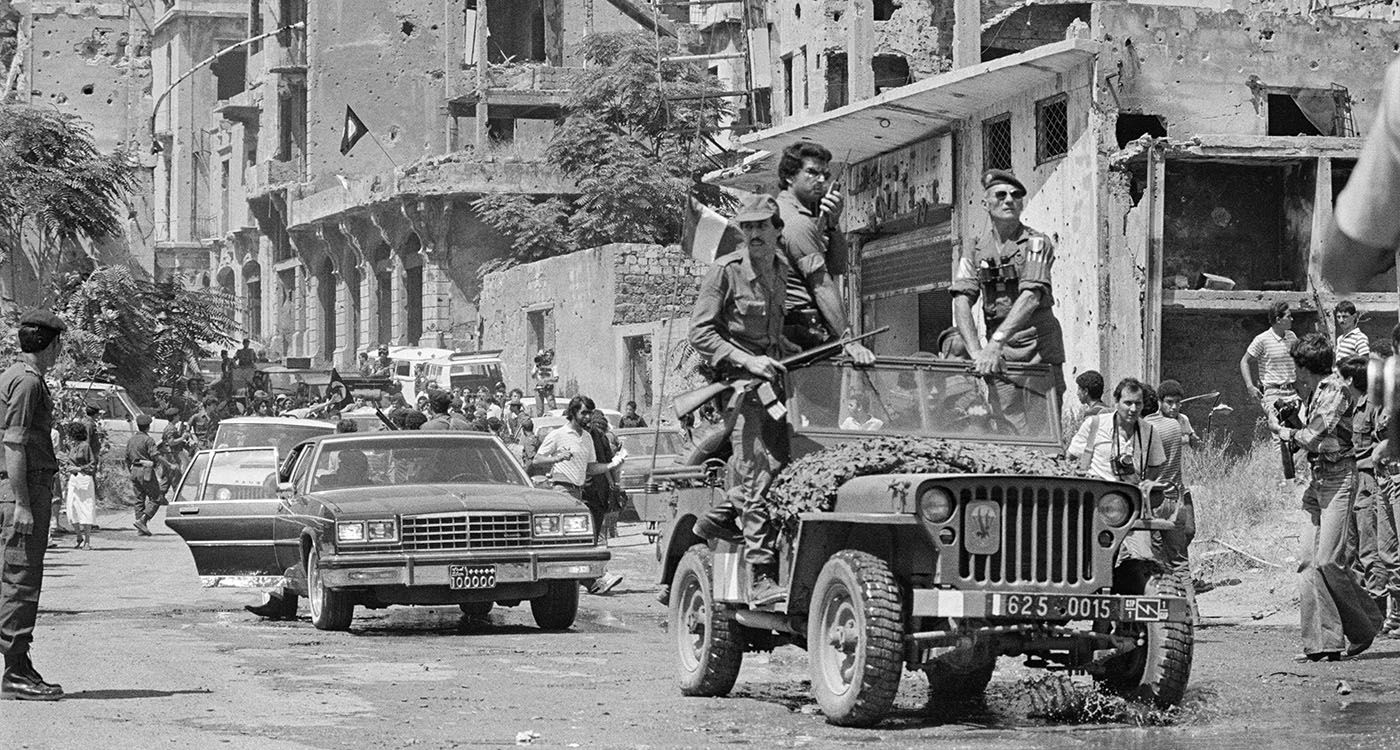
Ain el-Remmaneh, Sunday, April 13, 1975. A religious ceremony is held around 10 in the morning, to mark the inauguration of a Melkite church in this working-class suburb of Beirut, a stronghold of Lebanon’s main Christian parties. Several prominent figures are present, including President Camille Chamoun and Kataeb leader Pierre Gemayel.
During the ceremony, militiamen reportedly unaffiliated with the neighborhood—allegedly Palestinians—engage in a series of provocative acts near the church, leading to a gunfight in which the Kataeb’s local security chief for the Ain Remmaneh–Furn el-Chebbak sector, Joseph Bouassi, is killed instantly.
Less than an hour later—whether by coincidence or coordinated intent—nearly 30 armed Palestinians traveling by bus enter the neighborhood. They come under machine-gun fire. The result: 20 Palestinian fighters are killed.
A detailed account of what took place on that fateful morning of April 13, 1975, may seem trivial 50 years later. Yet, revisiting the sequence of events, even briefly, remains relevant—because at the time, it pointed to a clear show of belligerence by a Palestinian faction, and possibly a deliberate attempt to ignite a broader conflict. That reading is supported by detailed testimony from Joseph Asmar, a former local Kataeb official and young militiaman who was present that day.
He recalls that shortly after the religious service began at the newly built Melkite church, a Land Rover broke through a checkpoint set up by the Internal Security Forces in the area. It was intercepted by Kataeb supporters, who forced it to leave the neighborhood. Roughly 10 minutes later, a Volkswagen Beetle arrived, with its passengers also engaging in provocative behavior. A few minutes later, Asmar says, a Fiat suddenly entered the area and opened fire. Joseph Bouassi was fatally shot.
A particularly significant detail, which could lend weight to the theory of a deliberate plot: a few minutes after the gunfight triggered by the passengers of the Fiat, an officer from an official security service requested to meet with the area’s chief, Joseph Asmar, to warn him of an impending attack on the Kataeb supporters, who were immediately mobilized. The bus carrying the armed Palestinians attempted to enter Ain el-Remmaneh from Chiyah and, inevitably, the worst occurred. It was just before 11 AM.
Less than 45 minutes elapsed between the start of the mass, attended by Chamoun and Pierre Gemayel, and the series of aggressive acts that led to the assassination of Joseph Bouassi. These events quickly sparked a violent chain reaction, undoubtedly because they unfolded on Lebanese soil, in an already volatile global context.
For many, the Ain el-Remmaneh bus incident symbolically marked the spark of the Lebanese war. More specifically, it signaled the beginning of the successive “Lebanese wars”—fought on behalf of others—which, 50 years later to the day, continue to devastate Lebanon. Those who focus solely on the bus incident as the spark for these wars fail to acknowledge, or utterly overlook two key factors: first, the incident occurred shortly after the assassination of Joseph Bouassi, making it a direct consequence of his death; and second—and this is the most crucial point—the tragic events of April 13, 1975, were the culmination of a long-running, chronic Lebanese-Palestinian tension that had been steadily escalating for years.
The growing tension had been gradually provoked, nurtured and amplified over the years by Palestinian acts and militia violence which laid the groundwork for the explosive spark of April 13, 1975. As a result, this incident did not mark the beginning of the conflict, but rather the culmination of a long process of decay and destabilization that ultimately led to the wars in Lebanon.
The main centers of militia activity at the time were primarily located in the outskirts and central areas of the capital, including the Tel el-Zaatar refugee camp, overlooking Beirut from the Ain Saadeh area, and the Quarantine slum, where Palestinian factions and militia groups with unclear allegiances were based. This led to periodic roadblocks along the main highways in these regions, where kidnappings based on religious affiliations were often carried out, followed by beatings.
These increasing abuses and atrocities might have been perceived as mere urban insecurity. However, they were, in fact, a manifestation of a deeper existential crisis that had been gradually undermining the very foundations and socio-communal fabric of Lebanon since the late 1960s. To fully understand the true significance of April 13, it must be framed within a larger, regional geopolitical context, directly linked to the Arab-Israeli conflict.
The situation at the time, both complex and rapidly evolving, was a direct result of the aftermath of the June 1967 war, whose repercussions gradually spread into Lebanon. These consequences became entrenched on Lebanese soil following other key developments in 1969 and 1970. This specific political chapter warrants a reminder and a clear-eyed analysis, particularly as we mark the 50th anniversary of April 13, 1975. More to follow to complete the picture…


Comments